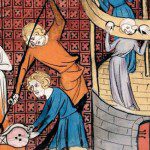I was flipping through my Facebook feed yesterday and stumbled on an article kind-of-about the 1996 movie The Craft. It wasn’t the article that stuck in my brain though it was the Facebook tagline connected to it: “This film changed everything.” I remember The Craft being a pretty big deal in the Witchcraft community when it came out, but I’m not sure it changed everything, or even all that much. Modern Paganism, especially Modern Witchcraft, was already a part of the zeitgeist by 1996. If anything The Craft was a reaction to the growing Witch-presence in popular culture.
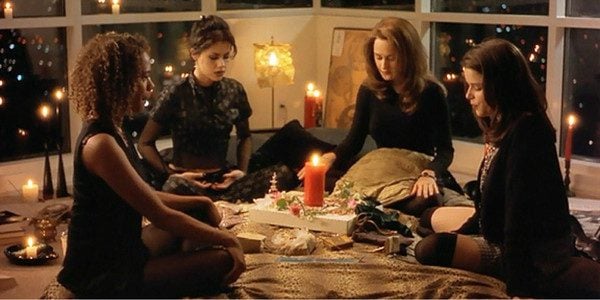
I’ll admit that The Craft was sort of groundbreaking in some ways. It was a mainstream Hollywood movie that presented rituals which often resembled Modern Witchcraft. And unlike the original Wicker Man (let’s just pretend the first one is the ONLY one), the world of The Craft resembled our own. It was far from perfect and left much of the Pagan Community with a bad taste in their mouths, but it was a step forward.
While The Craft was probably the first movie to hire a consultant from The Covenant of the Goddess, it was also just another Hollywood-Witch moment, and those moments had been occurring with some frequency by 1996. Heck, Witches have always been an integral part of the Hollywood machine, and were featured in abundance in the years leading up to The Craft. The Witches of Eastwick (1987) doesn’t look a whole lot like my version of Witchcraft, but like The Craft and Rosemary’s Baby it is grounded in a “this could be your neighbors” sort of way. I’ll also take Michelle Pfieffer, Susan Sarandon, and Cher over just about any other movie-trio you can name.
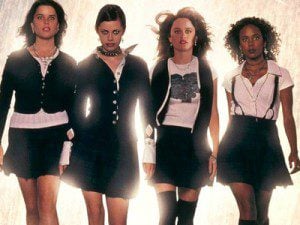
Speaking of Salem, released just a few months after The Craft was The Crucible, a retelling of the Salem witch-trials with Daniel Day-Lewis and Winona Ryder. That fall also saw Sabrina the Teenage Witch show up on television where it would run for seven years. Hollywood doesn’t move fast enough for those projects to be inspired by The Craft, instead it simply suggests that Witches were then a “thing,” sort of like they are right now.
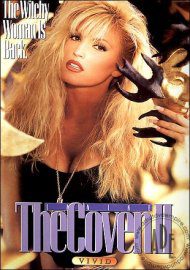 If there’s every a full-proof way to check the cultural-temperature in the room it’s the adult movie business. No one is making a porn movie full of seductive Witches with real Wiccan overtones unless there’s a market for it, but that’s exactly what happened in 1994 with the release of Vivid’s The Coven. A sequel was released the following year and actually featured some authentic Witchy-stuff, perhaps even more so than The Craft. In an outdoor sex scene a young couple “Beltanes” while a voice-over recites The Charge of the Goddess. The drum circle midway through the film doesn’t look that much different than your average Pagan gathering. Director Paul Thomas seems to have done as much research as the people who put The Craft together, that’s gotta count for something.
If there’s every a full-proof way to check the cultural-temperature in the room it’s the adult movie business. No one is making a porn movie full of seductive Witches with real Wiccan overtones unless there’s a market for it, but that’s exactly what happened in 1994 with the release of Vivid’s The Coven. A sequel was released the following year and actually featured some authentic Witchy-stuff, perhaps even more so than The Craft. In an outdoor sex scene a young couple “Beltanes” while a voice-over recites The Charge of the Goddess. The drum circle midway through the film doesn’t look that much different than your average Pagan gathering. Director Paul Thomas seems to have done as much research as the people who put The Craft together, that’s gotta count for something.
Certainly no porn movie is going to be as influential as a mainstream Hollywood release, but that’s not the point. This movie wouldn’t have been made if there wasn’t a market for Witches, and apparently there was. And there was so much of a market that it was shot on film (a big deal for porn at the time) and had a sequel in pretty short order. As far as adult-films go it has an-all star cast circa 1994: Janine Lindemulder, Krysti Lynn, and (my favorite) Brittany O’Connell. The Coven was followed by dozens of other adult-films featuring Witches of various authenticity, a trend that continues to this day.
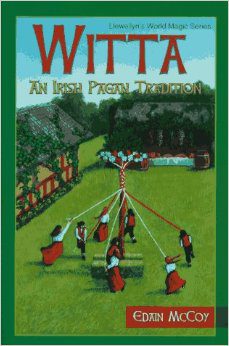 By 1996 the warehouse-bookstore was in its heyday, with Barnes and Noble and Borders stores showing up in nearly every large strip-mall. This type of shopping experience often gets lost in the “why Paganism got so big in the 90’s” discussions, but their importance shouldn’t be overlooked. All of a sudden books on Witchcraft and Paganism were nearly everywhere, with corporate overlords in New York and Ann Arbor deciding what went into stores. Local attitudes would no longer keep Scott Cunningham’s Wicca: A Guide For the Solitary Practitioner away from those who needed it. Oh, and the selection! The 90’s were a heyday for Pagan publishing and the box-stores were full of titles.
By 1996 the warehouse-bookstore was in its heyday, with Barnes and Noble and Borders stores showing up in nearly every large strip-mall. This type of shopping experience often gets lost in the “why Paganism got so big in the 90’s” discussions, but their importance shouldn’t be overlooked. All of a sudden books on Witchcraft and Paganism were nearly everywhere, with corporate overlords in New York and Ann Arbor deciding what went into stores. Local attitudes would no longer keep Scott Cunningham’s Wicca: A Guide For the Solitary Practitioner away from those who needed it. Oh, and the selection! The 90’s were a heyday for Pagan publishing and the box-stores were full of titles.
My local B. Dalton at the mall carried about five books on Witchcraft in the early 90’s. The local bookstore near my dorm room also carried about five books, luckily for me they were five different books, but even when the two were added together it didn’t amount to much. That changed for me when a Hastings opened up in Cape Girardeau and all of a sudden I had access to dozens of Pagan books. It’s where I discovered The Spiral Dance, Bucky’s Big Blue Book, and Cunningham’s Living Wicca. That little store also had Pagan magazines, which was how much of our community connected before the internet. I remember buying my first copy of The Green Egg there, but also New Moon Rising. A couple of years later I’d be buying Circle Network News at Tower Records in East Lansing, again all this was before The Craft hit theaters.
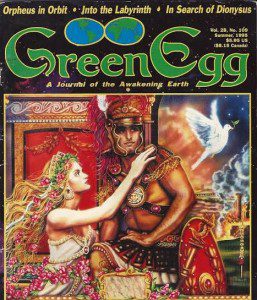
Due in part to the rise of Borders and B&N along with the increased public interest, Pagan Publishing exploded in the early 1990’s. Not all of it was good mind you, but there was an abundance of it by practitioners for practitioners for perhaps the first time ever. It was the era of Witta: An Irish Pagan Tradition (perhaps my least favorite Pagan book of all time) but also Silver Ravenwolf’s To Ride a Silver Broomstick one of the most influential and best 101 books of all time (I’ve been finding myself liking a lot of it again lately). By the end of the 90’s Broomstick and Cunningham’s Wicca would each sell over 100,000 copies a huge feat in the Pagan book world.
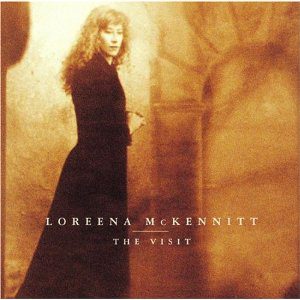 Musically the early 90’s were full of Paganish music too. I’ve written before about how much I love early Tori Amos, but Loreena McKennitt features in there too. Both of those artists sold millions of records and were 100%-witchy without being out of (or ever in) the broom closet. The mid-90’s also saw a huge jam-band revival and I don’t care what anyone out there says, Rusted Root’s When I Woke will always be one of my favorite Pagan records. I know my head was in the sky but 1994’s Woodstock Two felt like a gathering of the tribes, and I was certain that tribe contained Witches (I was there it had to!).
Musically the early 90’s were full of Paganish music too. I’ve written before about how much I love early Tori Amos, but Loreena McKennitt features in there too. Both of those artists sold millions of records and were 100%-witchy without being out of (or ever in) the broom closet. The mid-90’s also saw a huge jam-band revival and I don’t care what anyone out there says, Rusted Root’s When I Woke will always be one of my favorite Pagan records. I know my head was in the sky but 1994’s Woodstock Two felt like a gathering of the tribes, and I was certain that tribe contained Witches (I was there it had to!).
I think people tend to give The Craft far too much credit for spear-heading the Pagan revival of the 90’s. It was all there long before four teenage girls ruled the multiplex for two weekends in May of 1996. It was important, but the movie only existed because Modern Pagan Witchcraft was already a part of pop culture. Did it influence people? I’m sure it did, but those looking for Witchcraft would have found it nearly as easily without The Craft.



